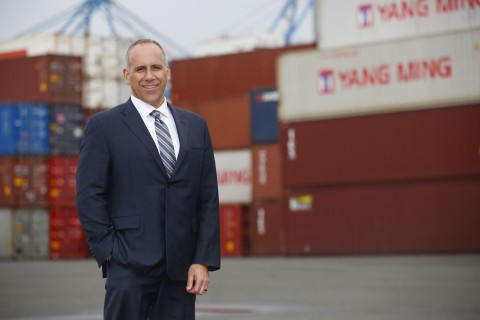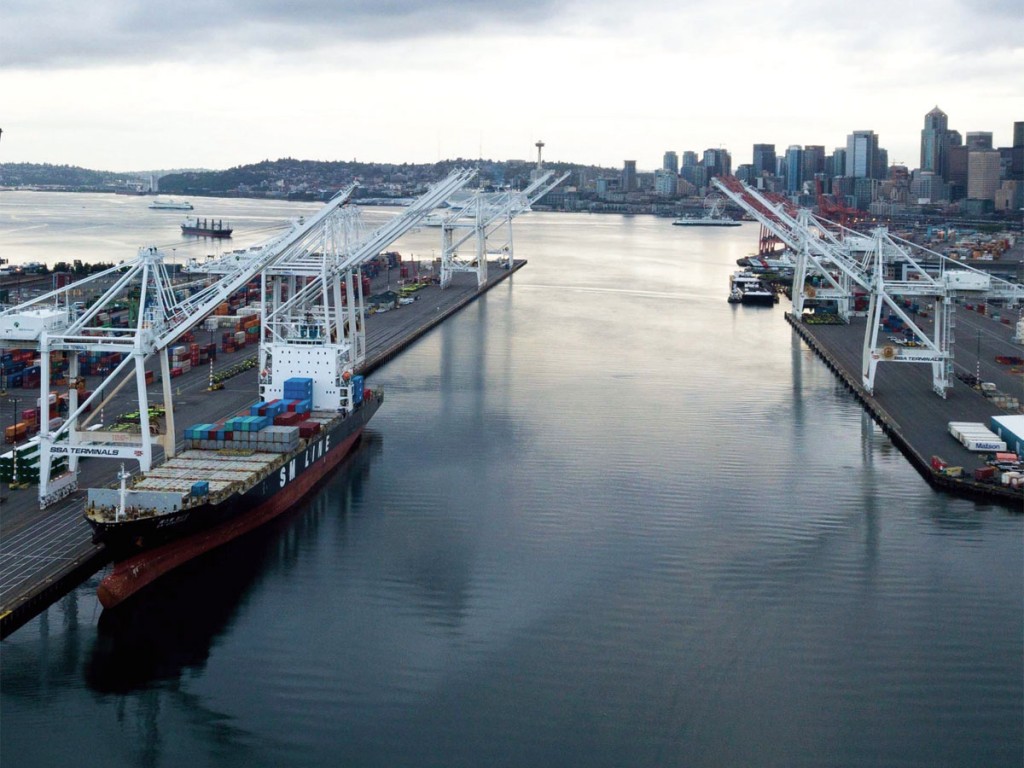The COVID-19 pandemic hit Washington State hard, and Northwest Seaport Alliance composed of the ports of Seattle and Tacoma has borne the brunt of severe downturn in Asian trade along with the challenges closer to home. But amidst the turmoil, the ports are building for a healthier future.
Predictably, the COVID-19 pandemic has hit the ports of Seattle and Tacoma extremely hard. For the first quarter of this year, total container volume fell by 15.4%. While exports were down by only 5%, imports dropped by more than 19%.
“Certainly, it’s a big concern throughout the supply chain,” said Sue Coffey, the Alliance’s director of business development.
Keeping Port Options Open
For the Alliance, maneuvering through these troubled times involves keeping the ports operating as smoothly and efficiently as possible, while taking all necessary precautions, said John Wolfe, the Alliance’s CEO, in a Webinar with various stakeholders.

(The terminals are now closed for business on Fridays, but are otherwise operating on schedule.)
Ports often stand as a bellwether of trade and commerce. If so, expect stormy weather for some time to come. According to Coffey, the lack of inbound trade isn’t just damaging in itself, it’s squeezing outbound trade as well. Not only do exporters of such mainstays as hay, meat and paper pulp have to deal with cancelled sailings, they’re having trouble sourcing containers because of the drop in import boxes.
“If they don’t have the import containers coming in, they’re not being emptied to capture an export load,” she said, explaining that eastbound, head-haul trade drives vessel sailing and capacity. Vessels “don’t make money on [US] exports. That’s just historic.”
That’s especially troublesome as exports have held up relatively well even during the height of the virus’s vehemence in China and elsewhere in Asia. And this export performance comes after a bruising trade war with China, one that saw many of the ports’ most prominent food exports plummet last year. Hay, cherries, salmon and fresh crab all declined by about half or more, according to a letter sent jointly to President Trump by West Coast port authorities urging an end to the trade war. Wheat exports were also adversely impacted.
An Anticipated Uptick
On the bright side, the Alliance anticipates an uptick in container trade in May, although that may be a temporary boost. American retailers, said Coffey, have begun to cancel orders in Asia. Their warehouses are full. Their stores are shuttered. Until retailers can fully get back to business, imports won’t return to normal.
To assist, the Alliance is offering temporary off-dock storage for shippers whose own warehouses may be full, but who anticipate inventory as the lockdown is lifted. According to Wolfe, storage will be available because of underutilized capacity at both ports.
The Alliance doesn’t expect the void sailings to become a permanent fixture. “When the economy rebounds and retailers reopen the volumes will return,” said Coffey.
Seattle and Tacoma constitute the fourth or fifth largest container ports complex in the US, depending on whether frontrunners Los Angeles and Long Beach are counted together or separately.
Last year, Seattle-Tacoma’s total volume stood at about 3.78 million TEUs, slightly less than 2018. This was largely the result of a severely down fourth quarter, which saw significant decreases in both imports and exports. Part of this, however, reflected unusually strong volumes at the end of 2018, when importers rushed to ship in goods in anticipation of higher tariffs launched by Trump against China and others.
It goes without saying that the Alliance is dependent on Asia-related trade. Its top five trading partners are all from Asia, both in terms of TEUs and cargo value. China leads the pack, with more than three times as many containers as second place Japan and more than four times third place finisher South Korea.
Terminal 5 and the Eighteen Thousands
All this current ferment comes as the Seaport Alliance is in the midst of a major upgrade designed to position itself better for the years ahead. Construction work continues on the redevelopment of Seattle’s Terminal 5, already considered a top-grade facility because of its deep berth and an on-dock rail yard. The container terminal is now being upgraded to handle ultra-large container ships of up to 18,000 TEUs, which the Alliance believes will become a fixture of the future. “Longer term, the eighteen thousands will be coming up to the Pacific Northwest,” said Coffey. “That’s the outlook that we see and we’re building for that.”

This current upgrade includes berth deepening and dock strengthening to accommodate not only the larger ships, but bigger cranes as well. In addition, the modernization will include electrical and environmental improvements. The Alliance said that the upgrade will result in an additional potential capacity of 1.6 million TEUs.
In announcing the project last year, the Alliance acknowledged that they battle for business not just with LA and Long Beach, but with Vancouver as well, which gets assistance from the Canadian government. “Competition for the trans-Pacific market among the North American West Coast ports has become particularly fierce over the last few years, as shipping lines have consolidated operations into larger vessels with fewer port calls,” the statement read.
Stevedoring Services of America Terminals (SSAT) and Terminal International Ltd (TIL Group) will create a joint venture to operate the modernized Terminal 5 in a 32-year lease.
Construction on the first phase of this $340 million project started last July. It was scheduled to be completed by the end of the year. Construction delays have pushed that timetable back two months, but the whole endeavor should be finished by the end of 2022 and on budget, according to Wolfe.
A longer-term effort might be the construction of inland ports in eastern Washington and Oregon, something akin to what East Coast ports in such states as South Carolina, Georgia and Virginia have done. “We’re at an early stage,” said Coffey. “We’re exploring to understand the demand.”



